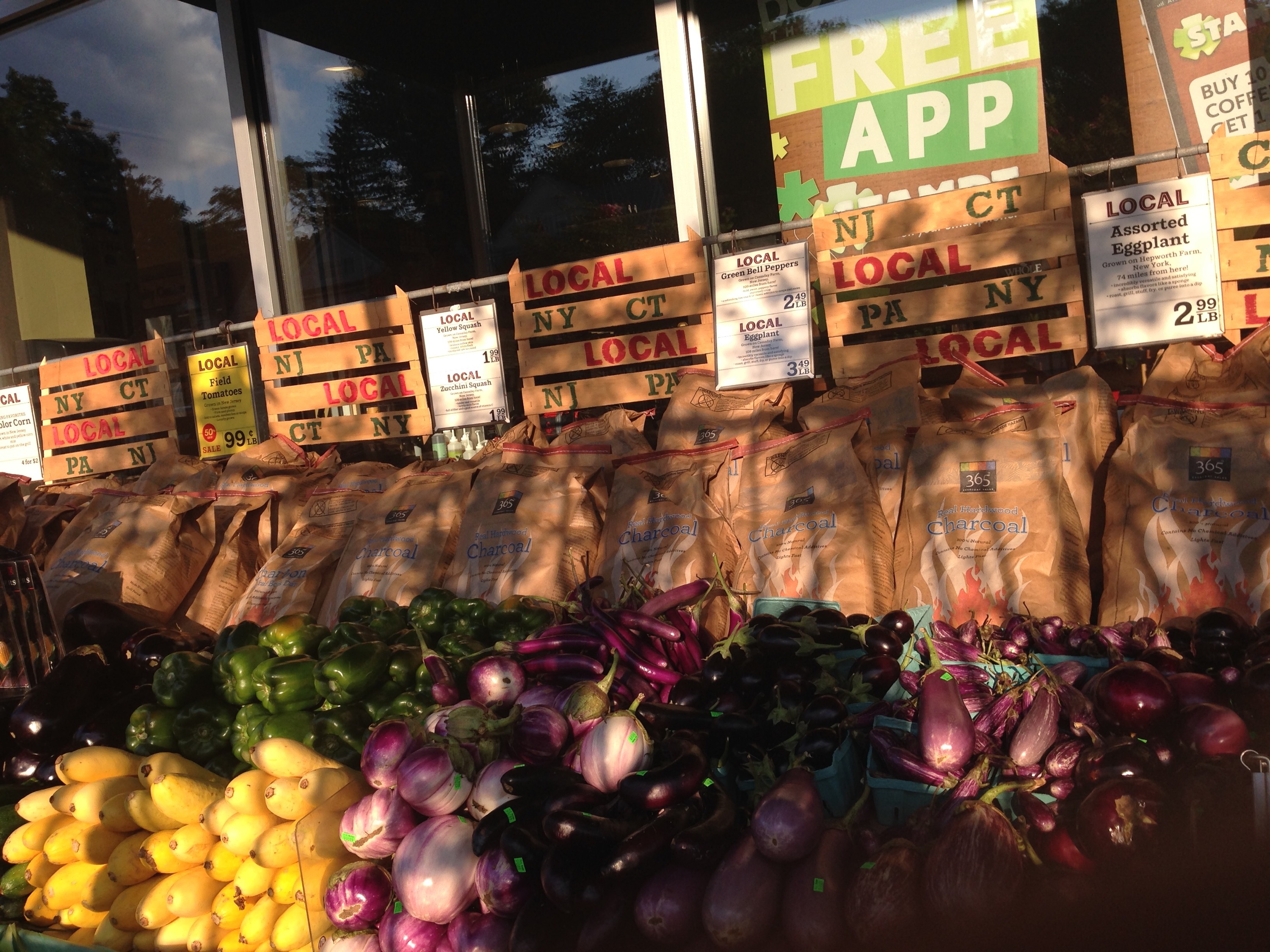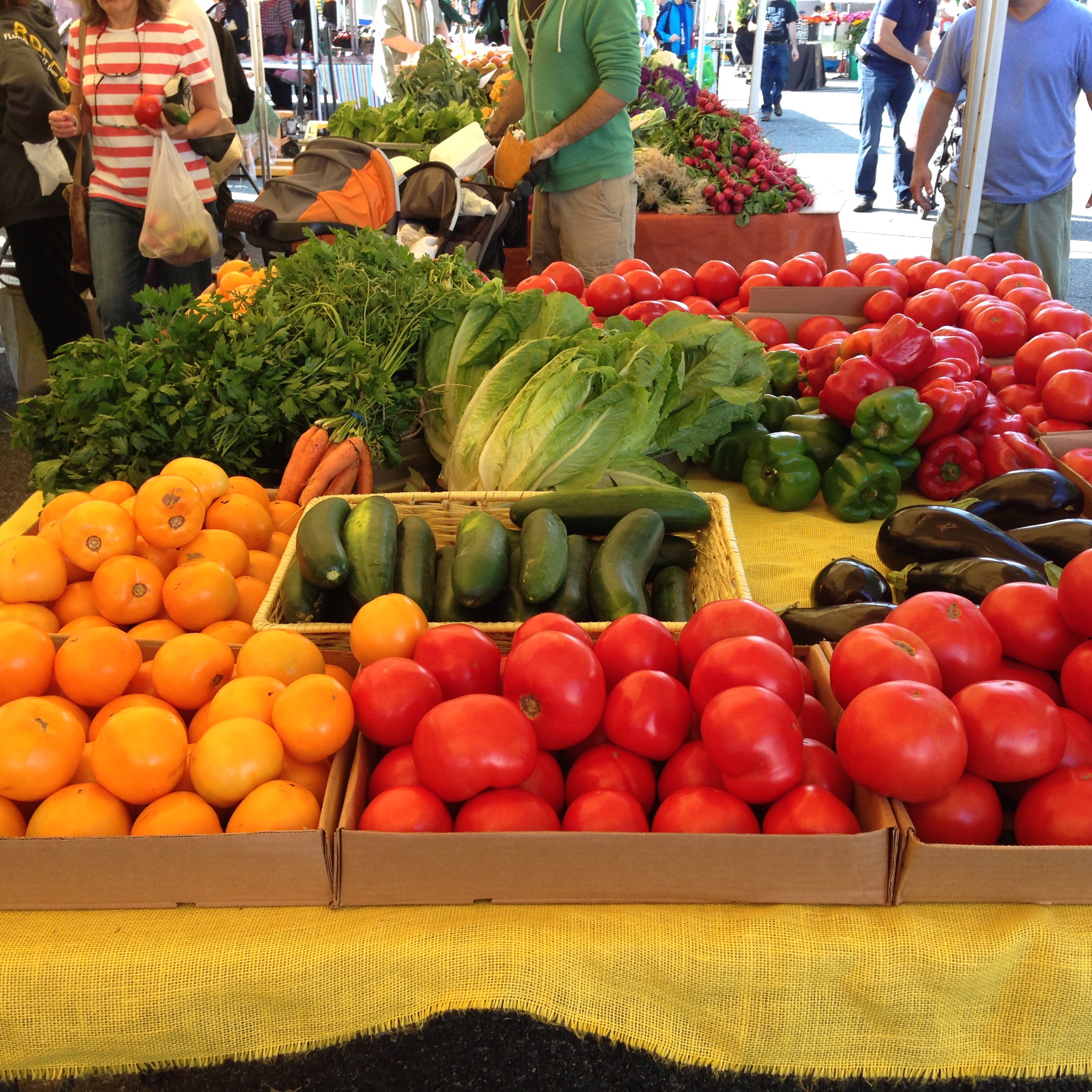by Karrin Perez
When I became Vegan, I made the decision to welcome more whole foods, particularly leafy greens and veggies into my life. Most of my food is organic, seasonal, or local, and I make it a practice to know the difference when I’m shopping. With all the variety in our food supply, it’s sometimes hard to decipher what’s what. After all, you could be eating bananas from Ecuador one day and oranges from Florida another, followed by a mango from Brazil. But we should be able to navigate our way through the labels on our food and know the distinctions between organic, local, and conventional. This knowledge enables you to make educated decisions about the produce you’re purchasing and reap the nutritional benefits.

Pesticides are a fact of life. They’re sprayed on our crops to repel pests, weeds, and bacteria/fungi. Pesticides help crops thrive in certain environments when they normally wouldn’t. However, pesticide residue can become a problem when we passively ingest them through our food. Conventional produce is sprayed with harsh pesticides and chemicals. Organic is defined as food produced with the use of feed or fertilizer of plant or animal origin without the use of chemical laden fertilizers, growth stimulants, antibiotics, or pesticides. Organic farmers use pesticides from natural sources (such as compost, manure) that are approved by the stringent US Organic Standards. So, understand that organic produce is sprayed and actually may be more intensively treated because natural pesticides can sometimes lack potency, but the ingredients are not as caustic. Local farmers also spray their crops, they may even use all natural pesticides even though they’re not certified organic (this can be costly and take up to 3 years to achieve). Other safe practices include crop rotations. You can find out a lot more about this on the Environmental Working Group’s (EWG) site. There is also a plethora of information on EWG’s site about pesticides, their effects, and how you can protect yourself.
Repeated exposure to harsh pesticides in conventional produce can potentially cause skin, eye, and lung irritation; hormone disruption; brain and nervous system toxicity; cancer; blood disorders; nerve disorders; birth defects; and reproduction effects. In fact, pesticides often only impact a fraction of the pests they were intended to. Conventional produce also has less nutrients such as Vitamin C, antioxidants, and phenolics than its organic counterpart.
GMOs are genes modified by the insertion of altered genes or a gene transplanted from another organism. This kind of produce has been genetically engineered. There are currently no regulations in the US and very limited labeling on GMO foods.
Below is a breakdown of the labels for your reference:
4 DIGIT CODE beginning with 3 or 4 = Conventionally Grown
5 DIGIT CODE beginning with 9 = Organic
5 DIGIT CODE beginning with 8 = Genetically Modified (GMO)
There are workarounds to buying organic, as it can get expensive. You can opt for local food at your neighborhood farmer’s market or you can follow the EWG’s dirty dozen and clean fifteen list that highlights the good and the bad when it comes to pesticides. You can buy conventional foods on the clean list to save money: avocados, sweet corn, pineapples, cabbage, frozen sweet peas, onions, asparagus, mangoes, papayas, kiwis, eggplant, grapefruit, cantaloupe, cauliflower and sweet potatoes; and stick with organic for the dirtier produce: apples, strawberries, grapes, celery, peaches, spinach, sweet bell peppers, imported nectarines, cucumbers, cherry tomatoes, imported snap peas and potatoes. Be careful when splurging on organic food that is not in season. Chances are, it’s been imported from afar and is not at all fresh and highly likely to rot quickly. Be sure to scrutinize it before buying.

No matter what you buy, always be sure to wash your produce thoroughly before consuming it (that includes bagged greens and veggies that claimed to be triple washed)! Please know that your produce is waxed (with paraffins often used for waxing cars!) which can trap pesticides and bacteria under the surface, regardless of whether they’re organic or not. Produce is waxed to preserve the produce while it is transported to its destination which can take weeks depending on where it’s shipped. The skin of fruits and vegetables can provide valuable nutrients that you don’t want to always peel away, especially with organic produce, so cleaning the surface thoroughly is the best way to get around this. Also note, that produce is handled by many people before it reaches your basket and dirt and grime (including manure) can still reside on the surface. Farmer’s markets are particularly known to just pick and package their produce without washing it. I use The Honest Company plant-based vegetable and fruit cleaner, but there are plenty of great products on the market. Be sure to avoid cleaners with alcohol, chlorine, and other caustic chemicals. Let the cleaner sit for a minimum of 5 minutes before rinsing. Cleaners can also help to extend the shelf life of your veggies and fruits if you pre-wash it before refrigerating. Food borne illness is a real issue that you don’t want to fall victim to (leafy greens are the biggest violators).
We all want to be healthy and safe. These tips are just a few to help you along the way. Stay in the know when it comes to your food, ask your local farmers if they spray and with what do they spray their produce with. The more you ask, the more you know, ensuring the safety of you and your family. Happy picking!
Karrin Perez is a health coach, plant-based diet advocate, animal lover, and Vegan who loves to share her passion for natural living through her practice, KJP Green Living. She works with clients who lead busy lives and need support and guidance for implementing sustainable lifestyle changes to achieve overall balance and holistic health. She specializes in plant-based nutrition and “getting more green in your life” to stay fit and healthy. She loves volunteering at her local animal rescue, cooking tons of Vegan delights, doing hot yoga, and exploring whole foods.



